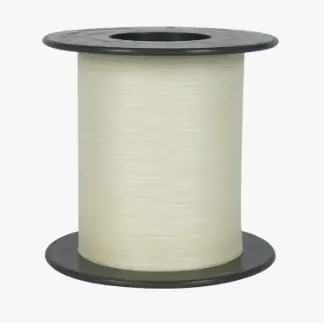In the field of textiles, functional yarns are creating a storm of innovation. From sports equipment to medical supplies, from daily clothing to high-tech electronic products, functional yarns are everywhere. They give fabrics extraordinary properties and completely change our traditional understanding of textiles. So, what exactly is functional yarn? How does it reshape our lives? Let's unveil its mystery together.
Functional yarn: a textile innovation beyond tradition
Functional yarn is not an ordinary textile material. It is a high-tech product that combines mechanical properties and special functions. Through carefully selected fiber raw materials and unique processing technology, functional yarns are endowed with properties far beyond ordinary yarns, such as moisture absorption and perspiration, antibacterial and deodorization, warmth and cold protection, antistatic, UV protection, etc. These characteristics have greatly expanded the application range of textiles, enabling them to meet the special needs of different fields.
Ingenuity: the production process of functional yarns
The manufacturing process of functional yarns is full of technology and ingenuity. Starting from the selection of fibers, manufacturers need to select suitable raw materials according to the target functions. These materials can be natural fibers such as cotton, linen, silk, and wool, or synthetic fibers such as polyester, nylon, and acrylic. In recent years, with the increase in environmental awareness, recycled fibers have also become an important source of raw materials for functional yarns.

In the processing stage, advanced spinning technologies are widely used, such as wet spinning, air spinning, and ring spinning. Some special treatment processes, such as adding functional additives, surface coating, and composite spinning technology, can further enhance the functional properties of yarns. For example, by adding nano-scale antibacterial particles to the fibers, the yarn can be given excellent antibacterial properties; using a special spinning process to produce hollow fibers can significantly improve the warmth retention effect of the yarn.
Excellent performance: the unique advantage of functional yarns
The greatest charm of functional yarns lies in their excellent performance. Take moisture-wicking yarn as an example. It can quickly absorb sweat from the human body surface and conduct it to the outer layer of the fabric, accelerating evaporation, thereby keeping the skin dry and making the wearer feel comfortable even during exercise or hot environments. This feature is particularly important in sportswear and outdoor equipment, effectively improving the functionality and wearing experience of the product.
Antibacterial and deodorizing yarns inhibit bacterial growth and reduce odor generation, providing a healthier choice for undergarments and medical and sanitary products. In the medical field, bandages and surgical gowns made of antibacterial yarns can reduce the risk of infection and promote wound healing.
Warm and cold-proof yarns effectively block heat loss through special fiber structures or adding thermal insulation materials, such as hollow fibers and cashmere, to provide warm care for people in cold seasons. Antistatic yarns can play an important role in industries sensitive to static electricity, such as electronics and medical treatment, to prevent static electricity from damaging precision instruments and electronic products.
Multiple types: functional yarns that meet different needs
There are many types of functional yarns, each targeting specific application scenarios and functional requirements. In addition to the aforementioned moisture absorption and perspiration, antibacterial and deodorizing, warm and cold-proof, and antistatic yarns, there are also anti-ultraviolet yarns, which can effectively block the damage of ultraviolet rays to the skin and are widely used in sun protection clothing and outdoor products; conductive yarns can be used to make fabrics with conductive properties, such as sensors and electrodes in smart wearable devices.
Widely used: the diversified field expansion of functional yarns
The application field of functional yarns is extremely wide, covering almost every aspect of our lives. In the field of clothing, from daily T-shirts, shirts, and underwear to professional sports equipment, outdoor clothing, protective work clothes, etc., functional yarns play an important role, improving the comfort, functionality and durability of clothing.
In the medical field, functional yarns are used to make bandages, gauze, surgical gowns, bedding, etc., providing better hygiene protection and functional support for the medical process. For example, bandages made of antibacterial yarns can reduce wound infections and promote healing; breathable and hygroscopic yarns can make patients more comfortable during use.

In the field of home textiles, functional yarns also bring us a better sleeping experience and living environment. For example, bedding with antibacterial and anti-mite functions can effectively reduce the breeding of bacteria and mites and protect the health of family members; moisture-wicking curtains and sofa covers can keep the room dry and comfortable.
Functional yarns are also widely used in automotive interiors, aerospace, building materials and other fields. In automotive interiors, functional yarns can be used to make seat fabrics, carpets, etc., providing comfort, wear resistance, antibacterial and other properties; in the aerospace field, high-performance functional yarns can be used to make aircraft structural components and interior materials to meet special requirements such as lightweight, high strength, and fire resistance; in building materials, functional yarns can be used to make architectural fabrics with waterproof, breathable, and heat-insulating functions, such as architectural membranes, heat-insulating curtains, etc.
As an innovative force in the textile field, functional yarns are profoundly changing our lives with their excellent performance and wide application. From improving the comfort of daily wear, to ensuring the safety and hygiene of medical processes, to promoting technological progress in various industries, the value of functional yarns is immeasurable. Looking into the future, with the continuous innovation of science and technology and the continuous expansion of application fields, functional yarns will surely shine more brightly and create a better life for us.

 English
English русский
русский Español
Español











